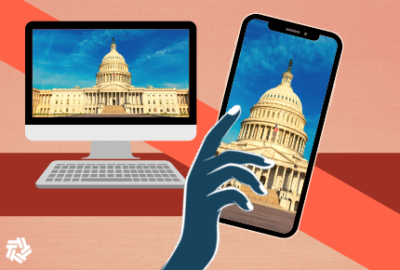New bill would mandate legacy IT inventories, modernization plans
The Legacy IT Reduction Act of 2022 aims to bring some transparency to this problem agencies have in knowing how many legacy IT systems they have and their plans to...
Agencies finally would be on the hook to address the ever growing need to modernize legacy technology systems.
After years of reports from the Government Accountability Office that found agencies didn’t have a good idea of how many or how old their legacy systems were, Sens. Maggie Hassan (D-N.H.) and John Cornyn (R-Texas) are trying to change that.

Hassan, the chairwoman of the Homeland Security and Governmental Affairs Emerging Threats and Spending Oversight Subcommittee, and Cornyn introduced the Legacy IT Reduction Act of 2022, which aims to bring some transparency to this problem.
“This commonsense, bipartisan bill with Sen. Cornyn will help ensure that the federal government isn’t wasting taxpayer dollars or risking a cyberattack simply because it hasn’t updated the necessary technology systems. All Americans know the frustration of trying to use an old computer that is too slow or isn’t compatible with the newest, securest software – now imagine the entire federal government trying to serve Americans using such technology,” Hassan said in a release. “This bipartisan bill will help ensure that agencies act to update critical technology and better serve the American people.”
The bill would require agencies to:
- Develop an inventory of legacy IT systems;
- Write modernization plans to update or dispose of their legacy IT systems; and
It also would require the Office of Management and Budget to issue guidance to assist agencies with identifying legacy IT and modernizing it.
The inventories would have to include the name of the top 10 oldest systems that need updating, the office or mission the technology supports and how it’s used, the most recent update or technology refresh the system went through, the cost and contractor who maintains the system and other details.
The modernization plans, which would be due two years after the bill becomes law, would include the inventory itself, a prioritized list of systems in need of modernizing, plans to modernize, retire and dispose of old systems or technology, the cost and sources of funding to implement the modernization plan and other details.
OMB, meanwhile, would set this entire effort in motion by issuing guidance within 180 days of the bill becoming law. The Federal CIO would establish the criteria to determine what qualifies as “legacy IT” and instructions and templates for developing the inventory and modernization plans.
The bill also includes a provision for agencies to transfer the older IT that still is usable to the Computers for Learning Program, run by non-profits to help students and communities have access to hardware and software.
Hassan has been pushing agencies to do more to modernize old systems for several years. In 2020, she asked 10 agencies to respond to questions about their legacy IT and modernization plans.
This has been a long standing problem with GAO looking at these old systems as far back as 2012, and OMB estimating in 2016 that agencies had at least $7 billion in technical debt.
Copyright © 2025 Federal News Network. All rights reserved. This website is not intended for users located within the European Economic Area.
Jason Miller is executive editor of Federal News Network and directs news coverage on the people, policy and programs of the federal government.
Follow @jmillerWFED






